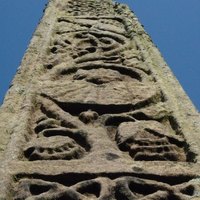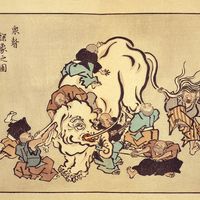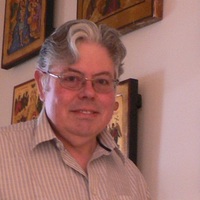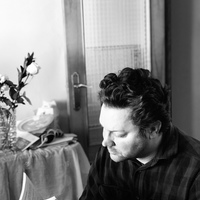
Robert Brown
Parish priest in charge of Bewcastle benefice of churches attempting to establish a sustainable, low impact dwelling of prayer on 6 acres in the English Borders, a mile from the Bewcastle Cross. Interested in the theology of creation and the relation of creation to the church.
Also a professional hydrologist, Chartered Water and Environment Manager, and Chartered Environmentalist, specialising in arid zone flood hydrology and UK flow regimes and water resources.
Also a professional hydrologist, Chartered Water and Environment Manager, and Chartered Environmentalist, specialising in arid zone flood hydrology and UK flow regimes and water resources.
less
Related Authors
Dimitri Salapatas
University Of Winchester
Todd LeVasseur
College of Charleston
David Ndegwah
Jaramogi Oginga Odinga University of Science & Technology
G B Ratcliff
University of Edinburgh
Thomas O'Loughlin
University of Nottingham
Duane A Miller
Facultad Protestante de Teología UEBE
InterestsView All (27)








Uploads
Papers by Robert Brown
Congar’s ecclesial ontology, formulated as Body of Christ, is investigated. His hierarchical interpretation of the relation between church structure, whose ontos as visible Body derives apneumatically from the incarnate Logos, and the Spirit, which vivifies the mystical Body through faith and the sacraments, is drawn from the filioque, subordinating the Spirit to the Institution. Souls united with God are eschatological ‘brides’, the reality for which the institution temporarily exists. Christ, or the Spirit, is the ‘I’ of the Church, which is not a ‘person’. Ultimately, souls are to be catholic, transparent to each other and God’s love. There is no explicit relation of Church to Creation.
Bulgakov identifies humanity as the hypostatic centre of Creation. In creating, God kenotically gives away his own being (Sophia) establishing temporality and otherness. Humanity is spirit-embodied earth, hypostasising created Sophia, drawn, through deification by the Spirit, into communion with God. The Trinitarian communion of the Godhead is imaged in Creation as the kenotic, hypostatic transparency of the Church. The Incarnation is a synergism between the Logos and Mary, who thereby participates in the salvific activity of the Son and the Spirit, as Spirit-bearer. She is the ‘Bride’ in whom all others participate.
Congar’s eschatology and Bulgakov’s kenotically hypostasised Creation proffer an understanding of the Church as the invited ‘yes’ of the personalised cosmos, reborn from Christ through the Cross, eschatologically irradiated by the Spirit with the glory of God, unified in kenotic love, whose communion with the Trinity as the ‘fourth’ hypostasis, ‘the Bride,’ proceeds through her nuptial union with the Son.
Talks by Robert Brown
Congar’s ecclesial ontology, formulated as Body of Christ, is investigated. His hierarchical interpretation of the relation between church structure, whose ontos as visible Body derives apneumatically from the incarnate Logos, and the Spirit, which vivifies the mystical Body through faith and the sacraments, is drawn from the filioque, subordinating the Spirit to the Institution. Souls united with God are eschatological ‘brides’, the reality for which the institution temporarily exists. Christ, or the Spirit, is the ‘I’ of the Church, which is not a ‘person’. Ultimately, souls are to be catholic, transparent to each other and God’s love. There is no explicit relation of Church to Creation.
Bulgakov identifies humanity as the hypostatic centre of Creation. In creating, God kenotically gives away his own being (Sophia) establishing temporality and otherness. Humanity is spirit-embodied earth, hypostasising created Sophia, drawn, through deification by the Spirit, into communion with God. The Trinitarian communion of the Godhead is imaged in Creation as the kenotic, hypostatic transparency of the Church. The Incarnation is a synergism between the Logos and Mary, who thereby participates in the salvific activity of the Son and the Spirit, as Spirit-bearer. She is the ‘Bride’ in whom all others participate.
Congar’s eschatology and Bulgakov’s kenotically hypostasised Creation proffer an understanding of the Church as the invited ‘yes’ of the personalised cosmos, reborn from Christ through the Cross, eschatologically irradiated by the Spirit with the glory of God, unified in kenotic love, whose communion with the Trinity as the ‘fourth’ hypostasis, ‘the Bride,’ proceeds through her nuptial union with the Son.